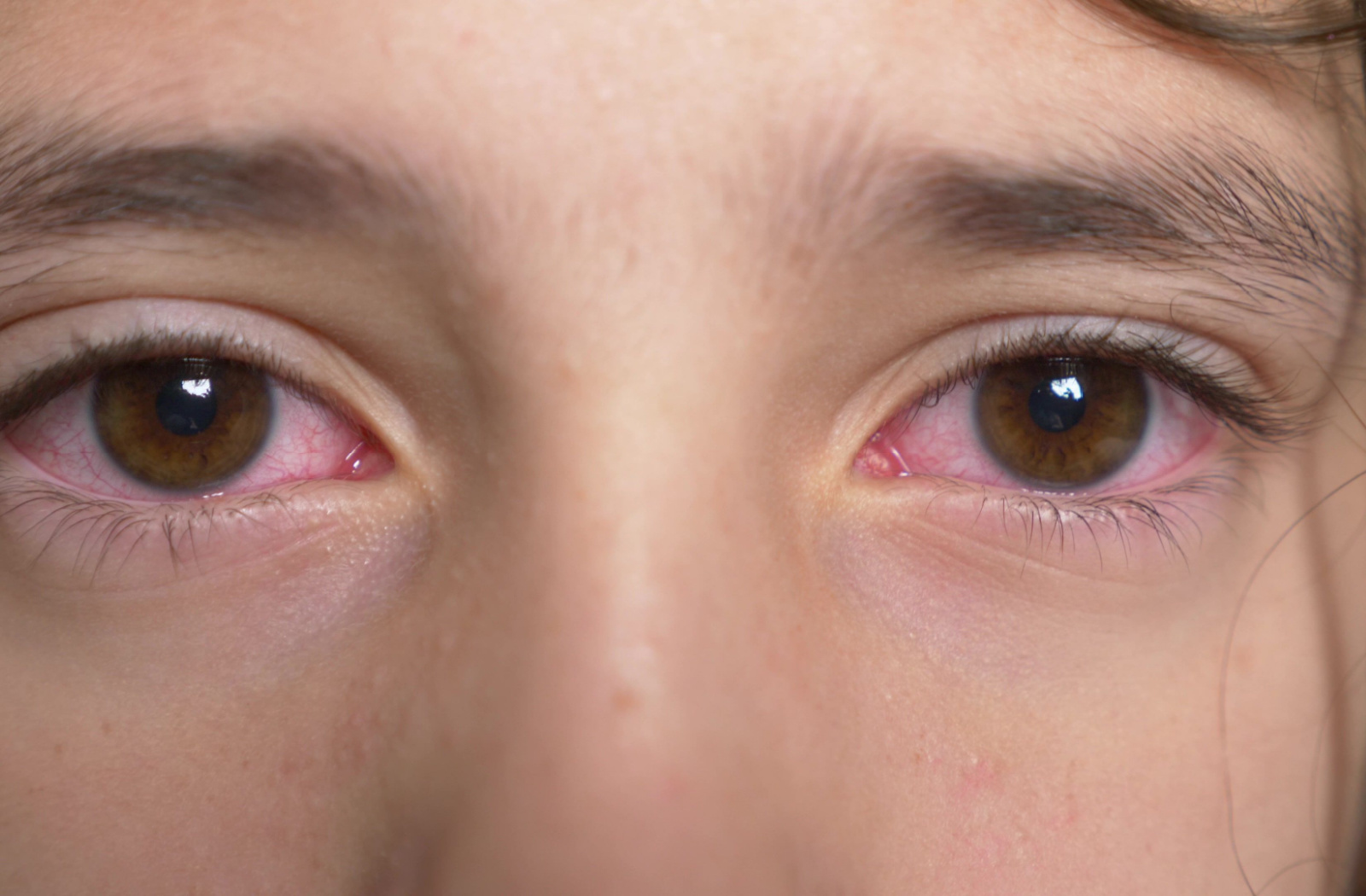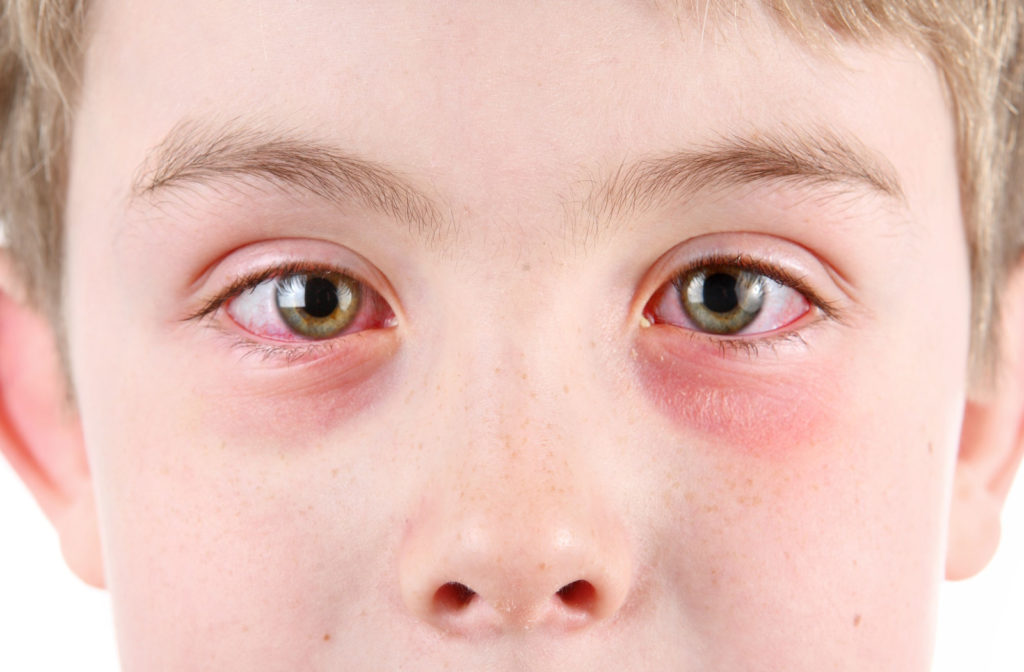Eye infections in children can be a cause for concern among parents, as they can affect a child’s comfort and vision.
Eye infections are notorious for being stubborn, which is why recognizing the signs and symptoms of eye infections early on is crucial for prompt treatment and preventing further complications.
From pink eye, styes, keratitis, blepharitis, and chalazia, the signs and symptoms of these eye infections often overlap, including redness, itching, swelling, discharge or tearing, and sensitivity to light.
It’s important to book an eye exam for your child to explore the different types of eye infections that can affect them, the available treatments, and most importantly, how you can prevent these pesky infections from making an unwanted appearance in your child’s life.
It is also important to be timely about seeking treatment for symptoms common to eye infections to avoid an eye emergency.
Common Eye Infections in Kids
With children often being in close proximity to others in daycare, school, or camp settings, opportunities for germs to spread are abundant.
Eye infections in children are typically caused by the same bacteria and viruses that cause colds, flu, sore throats, and sinus infections. Common eye infections are the following:
Conjunctivitis
Conjunctivitis, also known as pink eye, is a common eye infection that often appears in kids. It’s a viral or bacterial infection that affects the conjunctiva, the lining of the eye’s white part. Conjunctivitis can also be caused by allergies.
The symptoms of conjunctivitis include redness, itching, tearing, or discharge. Often, the infection may start in one eye and later spread to the other.
If your child is complaining of sore or itchy eyes and you notice these symptoms, you should consult with an eye specialist to determine the best treatment, as treatment depends on the type of conjunctivitis.
Sty
A sty is a red and painful lump that appears near the eye’s eyelid. It’s a bacterial infection that affects the eyelash hair follicles of the eyelid. The lump may be sore or itchy, and the eye may also be watery.
A warm compress for about 10 minutes, a few times a day, can help reduce swelling and pain. However, if the sty persists for more than a week, or if your child’s vision becomes blurry, it’s time to consult with an eye specialist.
Keratitis
Keratitis is a bacterial or viral infection that affects the cornea of the eye. It’s often caused by an injury, particularly when your little one has been in contact with dirty water or soil. Keratitis can also be caused by parasites, allergies, and vitamin deficiencies.
The symptoms of bacterial keratitis may include pain, redness, blurred vision, and excessive tearing. Other symptoms are sensitivity to light, foreign body sensation, and the feeling that something is in the eye.
Viral keratitis, on the other hand, may include redness, tearing, and sensitivity to light, as well as pain, blurred vision, and possible discharge.
You should seek treatment immediately as keratitis can lead to vision loss if left untreated, and the treatment type depends on the type of keratitis, so a proper diagnosis is important.
Blepharitis
Blepharitis is an inflammatory condition that affects the eyelids. It’s often caused by gland blockages that lead to redness, itching, and blurred vision. Other symptoms include crusting and matted eyelashes.
A warm compress and cleaning the eyelids with baby shampoo can help alleviate the symptoms. However, if the symptoms persist for more than a week, consulting with an eye specialist is essential.
Chalazia
Chalazia occurs due to blocked oil glands in the eyelid. They appear as small cysts and can be painful when they get bigger.
While they may go away without treatment, a warm compress can often help reduce the size and pain. If your child develops chalazia, it’s best to consult with an eye specialist as they may recommend antibiotics if the condition worsens.

Signs & Symptoms to Watch For:
As mentioned, many of these common eye infections share the same symptoms and signs, which is why it is important to get a proper diagnosis.
- Persistent Redness: If your child’s eyes remain consistently red, it could be a sign of an underlying infection.
- Excessive Tearing: Unexplained tearing, especially when accompanied by other symptoms, may indicate an eye infection.
- Itching or Irritation: If your child frequently complains of itching or irritation in the eyes, it’s important to investigate further.
- Discharge: Any unusual discharge, particularly if it’s yellow or green, warrants attention and may indicate an infection.
- Light Sensitivity: Sensitivity to light, or photophobia, is a common symptom associated with many eye infections.
What to Do If You Suspect an Eye Infection
It is important to seek professional medical advice promptly if you notice any concerning signs or symptoms.
Encourage your child to refrain from touching or rubbing their eyes to prevent further irritation and emphasize the importance of handwashing to prevent the spread of infection.
If prescribed medication, it is important that your child completes the full course as directed by the healthcare professional.
Safeguarding Your Child’s Vision
Being vigilant about your child’s eye health is essential for early detection and treatment of infections.
Conjunctivitis, sty, keratitis, blepharitis, and chalazia are some of the most common eye infections kids face, and it’s essential to know how to deal with them effectively.
By staying informed about the signs and symptoms, parents can play a proactive role in maintaining their child’s eye well-being.
Be sure to book an appointment with your eye specialist at Pacific EyeCare Optometry for proper diagnosis and treatment. Remember, prevention is better than treatment, so encourage your child to keep their hands and face clean and avoid rubbing their eyes to limit opportunities for infection.



